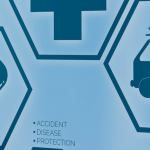It’s finally here! For almost a decade the American Ambulance Association has been preparing for this moment: collecting cost data in order to justify the reimbursement inadequacies of our current payment system. As Benjamin Franklin stated, “By failing to prepare, you are preparing to fail.” So prepare we did!
Our research indicated that due to industry capacity, a provider sample and survey approach would be preferable to a mandatory cost reporting structure. Congress agreed! Our research indicated that different organizational structures made us unique healthcare providers and as such, EMS’s special nature should be considered in the collection tool developed. Congress agreed! No one knows our industry better than we do and the final rule from the Centers for Medicare and Medicaid Services indicates they listened!
So your ambulance service was selected for the 2020 reporting period—now what? Here is your 10 STEP PLAN.
STEP 1: Sign up for the latest information on ambulance cost data collection.
Subscribe to email updates from the American Ambulance Association’s Ambulance Cost Education page, www.ambulancereports.org. Not only will we make sure you get the latest information disclosed from the Centers for Medicare & Medicaid Services, but we will also provide you with quick tutorials on how to fill out the cost data collection instrument. Most importantly, you can purchase AMBER! This software provides an easy, quick solution for you to input your data, with built-in tutorials to walk you through the data collection process.
STEP 2: Know what is included in your National Provider Identification (NPI) number.
It is important that you review the information in the Provider Enrollment, Chain, and Ownership System (PECOS) which supports the Medicare Provider and Supplier enrollment process. You will want to make sure the information that you provide in the cost data collection tool, at a minimum, matches what is in this system or on your CMS 855B Medicare enrollment application. Pay close attention to the following:
- Practice location(s)
- Vehicle Information
- Ownership
STEP 3: “Tele” a Friend!
More than 2,600 ambulance suppliers and providers were selected for the 2020 reporting period (Zip file download of services selected for 2020). Please reach out to your colleagues. Now is not the time to let competition or friendly rivalries stop us from communicating best practices. Call your fellow mobile healthcare providers!
STEP 4: Know your accounting “status.”
How you recognize cost and revenue will be extremely important in determining how you report. Cash accounting recognizes revenue and expenses only when money actually exchanges hands. Accrual accounting recognizes revenue and expenses when billed, not when money exchanges hands. This status will be key in determining how you report costs and revenues.
STEP 5: Know your mileage.
For every ambulance and non-ambulance vehicle that you use related to patient care, you will need to know the odometer readings at the beginning and end of 2020. Make sure you have a system to record the odometer readings accurately.
For example, you have a 2016 ambulance where the odometer reading on 1/1/2020 is 10,212. If on 12/31/2020 the odometer reading is 74,112, you will have the option of recording the full mileage of 63,900 in the data collection tool. This is another window into the “cost of readiness.”
STEP 6: Set up and Identify payer categories.
As identified by the Medicare Ground Ambulance Data Collection System (PDF download), there are nine payer type categories for billing ambulance transportation. Know these categories and set them up in your system now, prior to billing for ambulance transports in 2020. If you use a billing agency, seek confirmation that they have a way to identify these nine payer types. You may not have select reports to identify the numbers yet within these categories but that can be set up later in the reporting year.
Setting up your system NOW to identify these payer categories is critical as it will be too administratively burdensome to fix this retroactively.
STEP 7: Know if you share support services or stand alone.
Support services are services such as maintenance, dispatch, billing, materials management, human resources and other services that support patient care. You will need to know if you share these services with other entities such as fire, police, air ambulance, hospital or other entity not related to ground ambulance care.
If you share, then you will have to work out an allocation model to assign the costs and revenue appropriately. If you do not share support services, then you do not need to work about any of the questions related to allocation.
STEP 8: Identify sources of revenue and cost categories.
Check your systems. Now is the time to make sure you can identify all sources of revenue you receive whether from billing for an ambulance transport or from a grant or local tax. Understand your costs, especially those related to salary, vehicles, facilities and medical supplies. That is the first step in the ability to categorize appropriately.
STEP 9: Don’t panic!
Take a deep breath—It is not as complicated as it may seem. There are resources available and assistance for you and your ambulance services as outlined in STEP 1.
STEP 10: Repeat Step 1!
See, that wasn’t too bad, was it? Now you have a 10 Step Plan!
In all seriousness, while it may seem a bit daunting at first, breaking down the cost data collection process into small steps will ensure that our industry is prepared and the figures we enter into this cost data collection tool will glean useful information. It is imperative that we get this right the first time to avoid any unintended consequences, such as decreased reimbursements and other impactful changes that could harm the patients we serve.
As the saying goes, “the rising tide lifts all boats.” More than ever, we need to help and assist our colleagues as we navigate this new world of ambulance reimbursement.
So, what’s next? Cost data collection, my friend! Jump on board.





